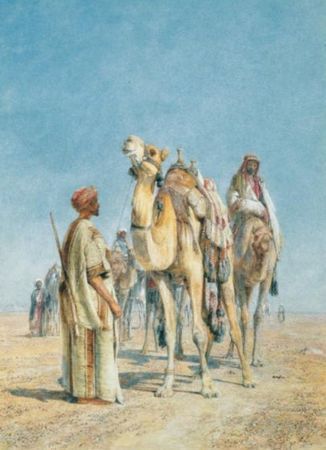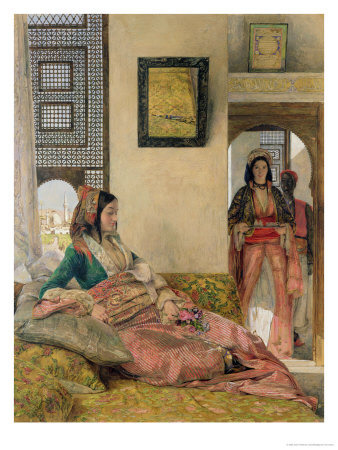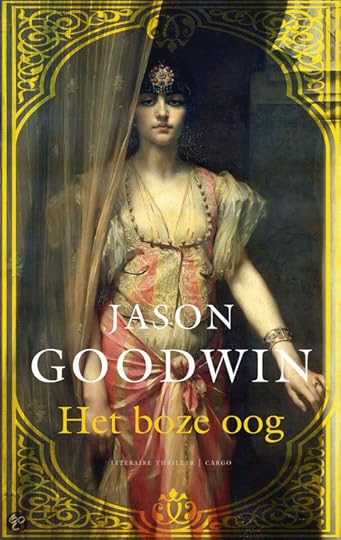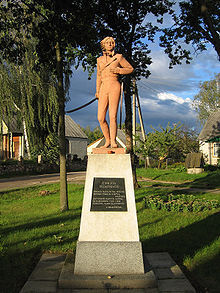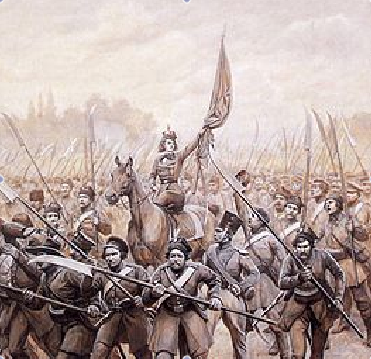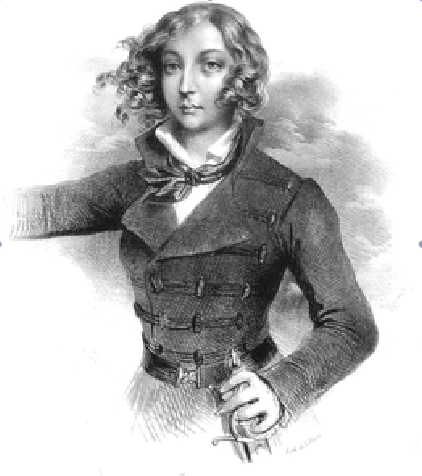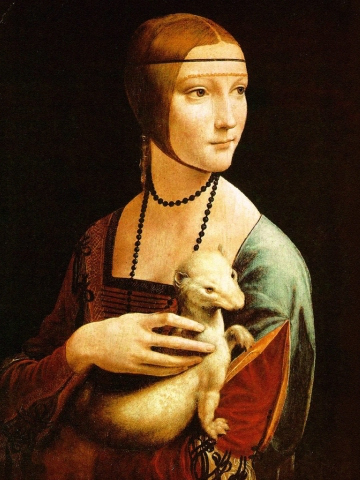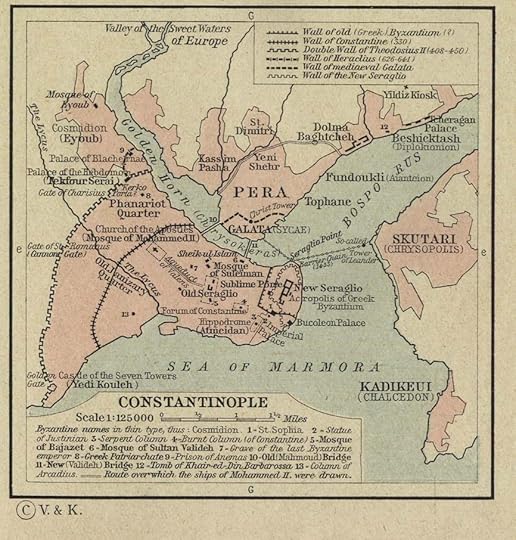Jason Goodwin's Blog: Talking Turkey, page 8
April 10, 2012
Anyone with £100,000 to spare? (£5 million preferred)
Speaking of orientalists (see previous blog), Sotheby's have a sale of Orientalist paintings on April 24th in London. The link is at the end of this post.
The star of the sale, to my mind, is Osman Hamdi Bey's The Scholar: it could be Yashim's young friend Kadri, from An Evil Eye, continuing his studies.

The estimate is £5 million.
If it's too short notice to free up that amount, why not John Frederick Lewis's A Halt in the Desert?
Lewis was not the first English artist to go East, but he was unusual in settling in Cairo for ten years from 1840, where he quietly worked on his sketch books. The British were about to fall in love with the Middle East. For one thing it was actually quite easy to go there by the 1840s, so that the sort of journeys which Byron had made so much of became almost everyday. David Wilkie, it's true, didn't make it home: his death aboard ship was commemorated in Turner's Peace – Burial at Sea. Richard Dadd came home only to murder his own dad, afterwards pursuing his career inside Broadmoor; but others – like David Roberts – managed to lash themselves around the sites in short order. Even Edward Lear was able to roam from Albania to Petra ('striped ham', he noted) and get home safely. There is a good Lear in the sale, too. By the 1860s you could visit Palmyra with Thomas Cook.
Travellers by then could contrast the warmth and personality-based governance of the Ottomans with the repressive machinery of centralised government represented by Russia. After fighting the Ottomans in the cause of Greek independence, the British (and the French) tried to prop up the Sick Man by any possible means; British forces saw off an Egyptian incursion into the sultan's dominions in 1840 (see An Evil Eye) and, famously, fought alongside the forces of the Sultan in the Crimea; some historians go so far as to describe the Ottoman Empire as a British protectorate in all but name. Echoing the spirit of Lady Mary Wortley Montagu's observations in the previous century, some observers compared eastern freedoms favourably with the industrial slavery of Victorian England.
Lewis was not alone in trying to convey the dignity of Ottoman civilisation, partly by his emphasis on craftsmanship over soulless machine products (although by the 1840s, Europeans were unwittingly cooing over Manchester cottons on sale in the bazaars of Constantinople, fully in the belief that they had stumbled over a cache of exquisite native prints). There was a receptive audience for this stuff at home. Thackeray wrote: 'There is a fortune to be made by painters in Cairo…I never saw such a variety of architecture, of life, of picturesqueness, of brilliant colour, of light and shade. There is a picture in every street, and at every bazaar stall.' Lewis, whom he championed, really did it best: he may have recycled the same stuff for 25 years after he came home, even trying the patience of Ruskin, who had first encouraged him into oils, but he did it with a shy sense of irony.
Both in The Carpet Seller and in Interior of a Mosque, Afternoon Prayer (The 'Asr) he renders a disguised self-portrait, once as the carpet dealer, the other as an old military man about to pray, which seem to exude a private yearning for fellowship with a world he could, when all is said and done, only watch from the outside. I like this one, A Harem Scene, Cairo, for the detail:
Lewis and his wife had no children. They never went out to parties, he wrote very few letters, and after all the apparent excitement of Cairene life he seems to have lived a life of quiet and blameless activity with his brushes in Walton-on-Thames, part of which, I am sure, can be glimpsed out of the window of his harem picture. His wife modelled for some of the decorous odalisques. Called upon to speak after dinner at a gathering of watercolourists, he apparently gazed silently at the ceiling and then sat down.
Not many painters do so well.








April 6, 2012
Going Dutch (and French)
ALL parcels are exciting, but this morning's delivery brought two thrills in one box.
Mauvais Oeil is the French edition of An Evil Eye - impeccably translated by Fortunato Israel who has been responsible for translating the whole series, published by Plon and by the French thriller house 10/18.
The cover illustration is from an 1893 painting, Les Almees, by Paul Louis Bouchard, a second rank orientalist; I suspect the setting is actually north African. Like Gerome's subjects, Bouchard's veer towards the sleazy… there is something about them taken from the brothels of Paris, not the palaces of the Orient.
Out of the same box, forwarded by my agent, came Het Boze Oog, translated by Auke Leistra and Atty Mensinga and published by De Bezige Bij.
It is a great picture, by Gaston Casemir Saint-Pierre, of Soudja-Sari, a character from Theophile Gautier's Fortuno:
"I must be content with telling you that Soudja-Sari means "The Languorous Eye," in accordance with Eastern custom which gives women names drawn from their physical peculiarities. Thanks to the translation of this significant name, which I owe to the kindness of a member of the Asiatic Society deeply versed in Javanese, Malay, and other Indian tongues, we now know that Soudja-Sari is a beautiful girl with a voluptuous eye, with a velvety, dreamy look."
I think I like her best, but the whole affair requires some consideration. After all, Yashim's world is exotic, no doubt; but it is also quite specific: Istanbul, 1839. The women of An Evil Eye are denizens of a sultan's harem, but they are rather more than idle odalisques. They manage power; they have histories; they have ambitions.
If they didn't, we wouldn't have a story!
Invite your Dutch and French friends to view the blog if you think they might be interested.








April 4, 2012
Emilia Plater revealed!
Well done everyone who guessed the identity of the Polish amazon: it was Countess Emilia Plater. Born in Lithuania, raised in modern-day Latvia, she died at Kapčiamiestis (Kopciowo) in Lithuania in 1831. This is her monument.
Her extraordinary and short life is well told on Wikipedia, here:
http://en.wikipedia.org/wiki/Emilia_Plater
The first right answer came from Canada, I believe – so congratulations to falcon44! And if they want their copy of An Evil Eye, I just need an address…
Another quiz soon!








March 30, 2012
Not Nancy Mitford
The dashing girl whose picture I posted yesterday has been identified as – among others – Mulan, Maria Walewska (closer), Lady Hester Stanhope, Maria Lebstuck, the Contessa d'Aspi d'Istria (from The Bellini Card), Juana Galan, Lady Chatterton and the young Nancy Mitford.
No. She ain't any one of them. And the only person who got it right so far is my sister Tabitha, who just knows a lot – but she can't have the prize copy of An Evil Eye because she's got one already and anyway family members are debarred from winning, as it says on the cornflake packets.
But here's a clue or two: Stanislaw Palewski would have both known and admired her, and mourned her passing in 1831 at the tender age of 25.
Here she is, doing her thing the year she died. And that really is a clue.








March 29, 2012
Another portrait – and a quiz
One of the joys of writing historical novels, crime or otherwise, is discovering real-life characters and making them part of the story.
I've recently become devoted to this young lady. Note the sword, and the fly-away hair – and just begin to guess her life history!
To tell the truth, it all ends rather sadly, especially for Ambassador Palewski, Yashim's old friend. That's a clue by the way.
Any ideas? Email me secretly at jsn.goodwin@gmail.com and a copy of An Evil Eye to the first right answer: who is she?








March 26, 2012
Gentleman with – ouch!
A reader just wrote to me about her research into Turkish knives, especially the curved knives used for cutting up borek and baklava. She had prompted by visiting Aygun Bozdogan at Kalite Bicak, the little cutler's shop between the Spice Bazaar and Rustem Pasha Mosque.
His collection is quite astonishing, from the tiniest shiny penknife that the Valide might wield to huge meat choppers for mincing lamb for a kebab. Obvious destination for a crime writer…
I did an interview with him a couple of years ago, with a reading from The Snake Stone:
Hope you enjoy this! 'Like' it and share it if you want…








March 22, 2012
Lady with – ouch!
One of the joys of writing is Doing Research – ie, not actually writing at all but following a hunch.
The hunch I've been following up today is the story of the Czartoryski family, formerly Princes of Lithuania, whose beautiful museum in Cracow contains – among many wonderful things, including full suits of Sarmatian armour, with wings – Leonardo's sinisterly captivating Lady with Ermine.
I first saw this painting in 1984, when Poland was under martial law; and again in 1990, when I walked through Cracow on my way to Istanbul. I saw it there a couple of years ago, too, but missed it when it came to the National Gallery last Winter. Forget the Mona Lisa's smile – this Lady is far more mysterious!
The Czartoryski I'm interested in is Adam (1770-1861), who was at different times Russia's foreign minister and also President of the Polish National Government in 1830, when the Poles rose in revolt against Russia. A little like the Georgian Shevardnadze, perhaps, who was the USSR's foreign minister and later President of independent Georgia.
Though the Prince never went to Istanbul himself, he sent Michał Czajkowski, a trusted lieutenant there in 1842 to investigate the possibility of creating a Polish enclave on the Bosphorus, where Poles exiled after the failure of their rebellion could settle.
The remarkable thing is that Czajkowski succeeded: a village called Adampol, or Adamköy, still exists about twenty miles outside Istanbul, and people there still speak Polish. What's more, Czajkowski stayed in Turkey, converted to Islam, and served in the Ottoman army as Sadyk Pasha, in charge of a regiment of Ottoman Cossacks.
I feel sure that Ambassador Palewski, Yashim's old friend, must have had something to do with it all…








March 21, 2012
Don’t get lost…
Last night I was invited to attend a book club which meets in the oldest continuously-inhabited house in Dorset. We gathered in the old hall, with three beautiful 13th century lancet windows overlooking the croquet lawn. It was our host’s great-grandmother, I think, who had that part of the moat filled in for croquet. How civilised! We drank Venetian wine and nibbled on baklava, and people talked about the Yashim books, politely.
Something that emerged from the talk was the glaring demand for a map to accompany the books, and maybe a cast-list for people who get lost among the unfamiliar names. Let me know what you think.
Here is a pretty clear map of Istanbul/Constantinople, showing some of the major landmarks.
As I wrote in Lords of the Horizons, ’Constantinople resembled the head of a dog, pointing east on a triangular peninsula. Over its nose the channel of the Golden Horn meets the Bosphorus; its throat is caressed by the Sea of Marmara; and the land walls erected by Theodosius in the fifth century are slung across as a sort of huge loose collar from ear to chest…’
You can see the Phanariot Quarter – modern-day Fener – incorporating Balat, where Yashim lives. Pera, across the Golden Horn, was the ‘European’ quarter’, and Ambassador Palewski’s Residence stands a little inland from Tophane, among the foreign embassies.
The Galata Tower, one of the fire-fighter’s watch points in The Janissary Tree, is here labelled Christ Tower, and Topkapi palace, home of the sultans and their harems, is called the New Seraglio. The church of Hagia Sophia is just outside its walls. The Hippodrome, or Atmeidan, is the site of the Serpent Column in The Snake Stone.
Of the two bridges shown across the Golden Horn, only the more easterly Galata bridge existed in Yashim’s time: its construction features in An Evil Eye.








Don't get lost…
Last night I was invited to attend a book club which meets in the oldest continuously-inhabited house in Dorset. We gathered in the old hall, with three beautiful 13th century lancet windows overlooking the croquet lawn. It was our host's great-grandmother, I think, who had that part of the moat filled in for croquet. How civilised! We drank Venetian wine and nibbled on baklava, and people talked about the Yashim books, politely.
Something that emerged from the talk was the glaring demand for a map to accompany the books, and maybe a cast-list for people who get lost among the unfamiliar names. Let me know what you think.
Here is a pretty clear map of Istanbul/Constantinople, showing some of the major landmarks.
As I wrote in Lords of the Horizons, 'Constantinople resembled the head of a dog, pointing east on a triangular peninsula. Over its nose the channel of the Golden Horn meets the Bosphorus; its throat is caressed by the Sea of Marmara; and the land walls erected by Theodosius in the fifth century are slung across as a sort of huge loose collar from ear to chest…'
You can see the Phanariot Quarter – modern-day Fener – incorporating Balat, where Yashim lives. Pera, across the Golden Horn, was the 'European' quarter', and Ambassador Palewski's Residence stands a little inland from Tophane, among the foreign embassies.
The Galata Tower, one of the fire-fighter's watch points in The Janissary Tree, is here labelled Christ Tower, and Topkapi palace, home of the sultans and their harems, is called the New Seraglio. The church of Hagia Sophia is just outside its walls. The Hippodrome, or Atmeidan, is the site of the Serpent Column in The Snake Stone.
Of the two bridges shown across the Golden Horn, only the more easterly Galata bridge existed in Yashim's time: its construction features in An Evil Eye.








March 16, 2012
Would the real Jane Eyre please stand up?
I've been asked by a charity, Action Against Hunger, to help at a fundraiser in London next month. Not by handing round the canapés at dinner, nor by donating a signed set of Yashim novels, and certainly not by writing out a cheque.
Instead, we are going to auction off a character in my next Yashim story – the one provisionally entitled The Latin Reader. Guests at the gala dinner will be asked to bid to have their name – or the name of someone they love – presented as a player in the forthcoming tale of revolution and betrayal.
Here's the link:
http://www.actionagainsthunger.org.uk/get-involved/events/social-events/too-many-critics/
It's not the first time it has been done, of course. The great Fay Weldon supposedly raised £18,000 by promising to mention the name of a famous jeweller 12 times in a novel called, guess what, The Bulgari Connection. Lee Child, the bestselling thriller writer, once told me that the name of a character in 61 Hours – the lady who's always on the phone to Jack Reacher – was bought at a charity auction.
How far does it go? Was Mrs Dalloway in fact the wife of a wealthy industrialist? Or Ebenezer Scrooge: could he have been a generous philanthropist after all? Was Hercules Poirot an eighty-year old Belgian detective? Maybe not: maybe Agatha Christie simply hired him out, naming him after the bouncing newborn son of M and Mme Poirot, rich snail-farmers from Quimper?
My own small contribution to the genre does present me with a certain obvious challenge. Not many Ottoman pashas were known as John Smith, or Lavinia Hardy, or Ted Buxter, or whoever might be bidding on the night. Will there be any Turks at the gala? I could use an Italian, as it happens, and possibly an Irishman. But if the bid goes to, say, a Jade Hanratty or a Carol Martin…
But there you are. It's often a good thing to write around a restriction. Who knows what role Sylvester Branksome-Pyke might play in 1840s Istanbul?
What fun to imagine…!








Talking Turkey
I I'm drawn to Istanbul the way one is drawn to Dickens's London, or Chandler's LA: it is a riotous, burgeoning, creative city with stories round every corner. An atmosphere I try to catch in my books.
I'm an intermittent blogger but feel free to browse: there are essays on the city, on crime writing, on books, food, Polish freedom fighters, and history. ...more
- Jason Goodwin's profile
- 411 followers


